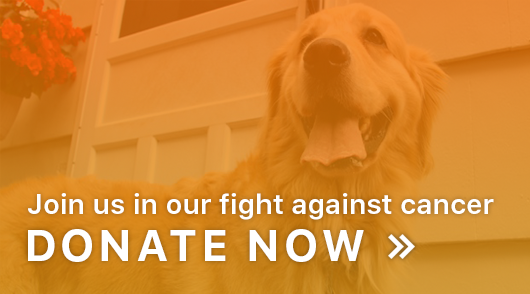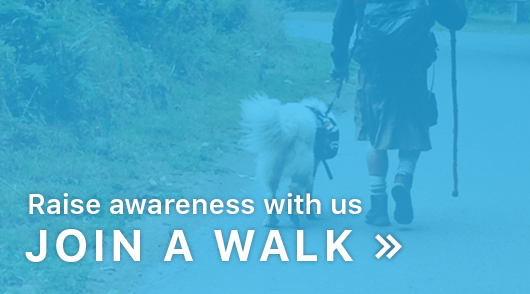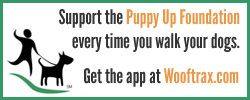
Many dogs enjoy a romp in the park on a sunny day. Running off-leash and playing with their canine pals is a real treat.
But before you go, here are some suggestions, both for park newbies and a few reminders for seasoned visitors.
Dog Park Safety: What to Know Before You Go
By Jodi Helmer
“Dogs are social creatures and like to play with other dogs,” says Susan Nelson, DVM, clinical associate professor at Kansas State University College of Veterinary Medicine. “A dog park is a great place for dogs to get some exercise and learn social skills.”
While you can easily find a dog park, make sure you know how to keep Fido safe before unclipping the leash.
For starters, Nelson suggests you visit a park solo to observe the dogs and their owners, and decide whether you’re comfortable with what you see. A park filled with aggressive dogs and inattentive owners is not the right place to take your pet for off-leash play, she says.
Make sure the park’s fencing is adequate, too. Dogs shouldn’t be able to jump over or scoot under it. Look for broken boards or jagged wires that could hurt your pal.
Nelson also suggests you stick to dog parks with separate play areas for large and small pets. “A dachshund playing with a Lab could get hurt just because of the sheer difference in size; it’s safest to keep them separated,” she says. Consider the possibility that large dogs may see small breeds as prey, not playmates.
Understand too that dog parks are meant for pets that are well-socialized. If your buddy is aggressive or has issues that could make him hostile toward another dog playing with a ball or Frisbee, the dog park is not the place to teach him to make friends or share his toys. Nelson suggests you work with a trainer first to correct his behavior.
She also warns against taking shy or nervous dogs to the park. “A fearful dog might bite,” she explains. “Or it could get to the park and cower behind its owner, which can be traumatic for the dog.”
Another good idea is to steer clear of the dog park if your female pet is in heat. Along with the risk of an unplanned litter, nothing starts a dog fight faster than a group of male dogs vying for the attention of a ready-to-breed female.
To keep your dog from getting sick at the park, pick up his waste and bring a bowl for fresh water, instead of letting him lap from the communal bowl. (Parasites can be spread through feces and shared water bowls.) “Your dog is less likely to get sick if he’s not sharing a water bowl,” Nelson says.
The risk of illness is one of the biggest reasons to keep puppies out of the dog park. Pups younger than 12 weeks old are not fully immunized, and their young immune systems will struggle to fight common infections.
Remember to watch your pal — and the other dogs in the park — at all times. At the first sign of a problem, like growling, mounting, or other aggressive behavior that could turn into a scuffle, call your dog over for a break. If the behavior continues, leave the park.
“You have to be vigilant and try to stop problems before they begin,” Nelson says. “If there is a problem, be ready to intervene.”
In the event of a dogfight, be careful. “Do not get between dogs that are fighting,” she says. Instead, she suggests you throw water on fighting dogs or using a stick (not your hands) to separate them. In case of an emergency, know the location of the nearest veterinary hospital.
“In general, dog parks are safe, but you need to watch your dogs at the park just like you would watch your children on the playground,” Nelson says.
Other Ways to Be Safe
Stay up to date on vaccines. Your dog can encounter viruses and parasites at the park. Confirm he’s current on vaccines like rabies and distemper/parvo. Your vet might also recommend vaccinating against kennel cough, canine influenza, and leptospirosis.
“Vaccinations will keep your pet from getting sick at the park,” Nelson says. Also, make sure your dog is up to date on regular intestinal parasite prevention.
Protect your pooch against fleas and ticks. Ticks can lurk in grasses, and dogs and wildlife that visit the park can spread fleas. The best protection is to keep your pet up to date on flea and tick control. “Talk to your vet about which products work best in your area,” Nelson says.
Talk to your veterinarian, too. If your dog is uncomfortable with other canines, ask your vet to recommend a trainer.

DOG PARK ETIQUETTE AND SAFETY TIPS
Daniel Q. Estep, Ph.D. and Suzanne Hetts, Ph.D., Certified Applied Animal Behaviorists
Have realistic expectations about your dog’s suitability for going to a dog park. If he isn’t polite or friendly with others, get help to change his behavior before you take him to a dog park. Dog parks are not a place to rehabilitate fearful or aggressive dogs or those that just don’t know how to play well with others.
Before you take your dog into a dog park, spend a few minutes watching the other dogs and how they are playing and interacting with others. If the dogs seem to be too rough in their play or are intimidating other dogs, come back some other time.
If your dog has never been around other dogs before – don’t go to a dog park until he’s had a chance to be around other dogs in other situations so you have a better idea of how he reacts to other dogs.
If you aren’t sure how your dog will behave, don’t be ashamed or embarrassed to muzzle your dog the first few times he goes to a dog park. Better safe than sorry.
Introduce your dogs to other dogs gradually – allow your dog to greet other dogs while he’s still in the separate entry area available at some parks, or let your dogs sniff around the fenced boundary.
Be careful entering a dog park gate. Other dogs tend to crowd around to greet arriving dog. This jostling and crowding can be quite intimidating to many dogs and may result in a skirmish, or worse.
Do not take your small children or babies in strollers to a dog park. Dogs and children can easily frighten one another and bad things can happen to either of them in the blink of an eye.
Supervise your dog. This is not the time for you to be distracted talking with other owners or burying yourself in a book. You must be monitoring your dog’s activities to be sure she isn’t being badly and other dogs are not behaving badly toward her. This is another reason not to take young children – you can’t adequately supervise both dogs and kids at the same time.
Be particularly watchful of small dogs around big dogs. Don’t let big dogs frighten or threaten small dogs. Aggression between big and small dogs is especially likely to result in injuries to the small dog.
Don’t take any toys to the park your dog is not willing to share.
While tidbits can be a great way to reward good behavior, be careful about giving them to your dog when other dogs are nearby. If your dog can’t tolerate other dogs crowding around her wanting to share the goodies, treats may not be a good idea. If you are attempting to give treats to a crowd, require that all dogs sit and stay while eating.
Pick up after your dog. You don’t want to step in another dog’s poop anymore than someone else wants to step in your dog’s mess.
Avoid grabbing your dog’s collar when your dog is playing or interacting with other dogs. Such tugging can sometimes trigger threats and aggression toward nearby dogs.
If your dog seems to be fearful or is being “bullied” by other dogs, don’t let her stay, thinking she will “get over it”, that she will learn to “stand up for herself”. Chances are greater her behavior will get worse.
Don’t let other dogs threaten or scare your dog. If they won’t leave, then remove your dog.
If your dog is being a bully, being threatening or aggressive, or just seems to be overly excited, remove him from the park, either temporarily or permanently. It is not fair to put other dogs at risk. Make the safety of other dogs and people as high a priority as the safety of your own.
Know how to break up a dog fight. Direct Stop™, a harmless but effective citronella spray or a small hand-held air horn are your best bets. Don’t scream and yell at your dog, try to pull her off by the collar, or get in the middle of the fight as this only adds to the general arousal and greatly increases either the dogs’ or your, chances of injury.
Always take your cell phone and have the phone number of the local animal control agency. Call animal control or the local police and report any aggressive person or dog that won’t leave the dog park. These individuals are dangerous to people and dogs.
Be knowledgeable about dog body postures, communication signals and social behavior. You should be able to recognize stress, tension, fear, play, threats and aggression. Know the difference between play (which can be very active and sound violent) and real threats. Know when to intervene and when to stay out of an interaction among dogs. If you feel uninformed about canine behavior, learn more before taking your dog to a park. Harm can come to your dog if you under-react as well as over-react.
Recognize that by taking your dog to a dog park, you are accepting a degree of risk that your dog may be injured or may injure another dog. Don’t be naïve and think that a dog park is a safe place for your dog to be around other dogs. This may not always be the case.
Top Off-Leash Dog Parks in the United States
For a list of some of the best dog parks in the U.S, check out Bring Fido here.








